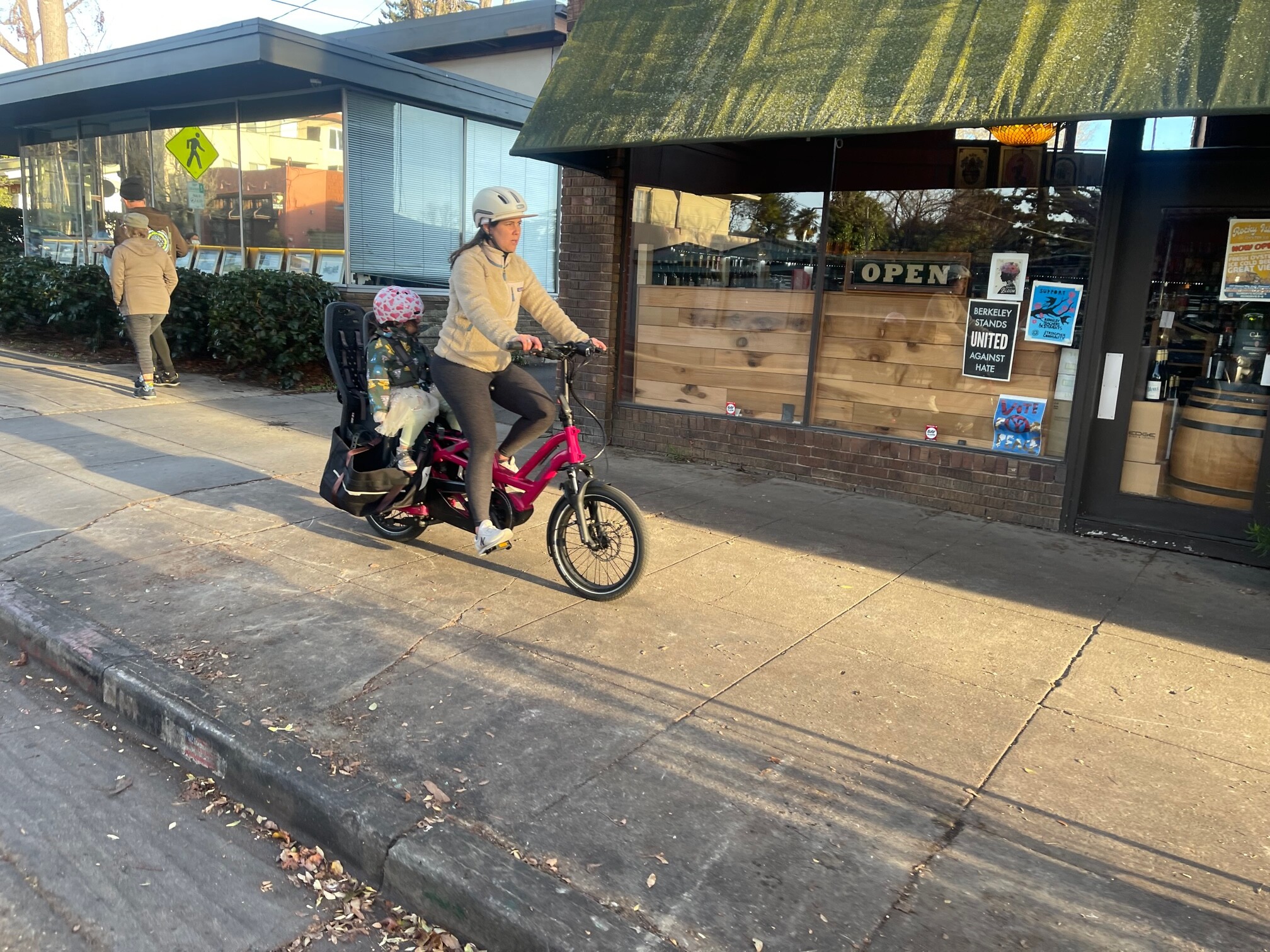By Charles Pekow
If you build infrastructure, will they come? Will residents of Indian reservations be more inclined to ride bicycles– and advocate for bicycling – if their communities built a more friendly bicycle infrastructure? Or will reservations become more bike-friendly only if residents want it and work for it? And do tribes, state and federal governments and bicycle advocates need to work more closely together to improve cycling conditions for the Native American community? If ever an underserved community could use a hand to promote bike riding, it consists of the Native American one.
A major problem: roads on reservations tend to be in terrible shape and not equipped for bicycling. Congress has made some efforts to help. The Fixing America’s Surface Transportation (FAST) Act signed into law late last year is supposed to make it easier for tribes to get federal transportation money without the added burden of dealing with state transportation departments. Also, FAST created a new $100 million Nationally Significant Federal Lands and Tribal Projects program of grants to build and rehab transportation facilities on federal or tribal land. The Federal Highway Administration (FHWA) hasn’t awarded any grants yet and applicants must follow a set of rules and preferences, but tribes with innovative ideas that include bicycle lanes could get some money. The criteria include improving “critical transportation facilities, including multimodal transportation facilities.” See https://www.fhwa.dot.gov/fastact/factsheets/nsfltpfs.cfm.
The law also calls for a multi-agency study of traffic safety on Indian reservations to be completed within a year. While the report would have to deal with matters such as drunk driving and pedestrian safety, it does not mention bicycling. (The law doesn’t rule out exploring it as part of the study, though.)
Furthermore, the Senate Committee on Indian Affairs approved a bill to relieve road conditions for Indians. The Tribal Infrastructure & Roads Enhancement & Safety (TIRES) Act (S. 1776) contains a variety of administrative measures to speed approval of traffic projects in Indian country and calls for studies on safety. But it says very little about bicycling, as if it’s not important.
The bill does allow for expedited permitting and approval of Tribal Public Safety Projects (federal agencies would have to decide within 75 days maximum on go-aheads). Such projects can include “installation and maintenance of signs, including fluorescent, yellow-green signs, at pedestrian-bicycle crossings and in school zones (and) construction and yellow-green signs at pedestrian-bicycle crossings and in school zones.”
In other words, the bill may allow for quicker approval of bicycle safety markings around schools and at crossings in Indian country. Nothing in the bill would deal with the paucity of bicycle facilities. Its only other consideration of cyclists states that if rural public safety projects include rumble strips or other warning devices, such devices could not interfere with bicycle safety.
The committee approved the bill and it was placed on the Senate calendar for a vote Feb. 29. The full Senate had not acted as of late April, though, and no similar legislation is pending in the House.
The committee did not even conduct a hearing on the bill. A year ago, however, it did hear testimony on the decrepit state of roadways on reservations. The only specific mention of biking came when J. Michael Chavarria, governor of the Pueblo of Santa Clara in New Mexico, stated that a “crucial part of road safety in our area focuses not only our drivers, but on pedestrians and bikers as well.” Chavarria was referring to a two-lane highway where autos zip through his village of about 1,000, putting bike riders at risk.
Chavarria did not elaborate in his testimony but said in an interview that about 14,000 vehicles zip through town daily because Santa Clara lies on the commuter route to Los Alamos National Laboratory. He has been trying, thus far unsuccessfully, to get the State of New Mexico to put in a sidewalk and bikepath. “We have a school crosswalk but folks don’t respect the signage,” Chavarria complains. “We’ve had accidents….People are in a rush to get to work or to get home from work” so drivers will take the shoulder to pass vehicles in front of them.
But overall, the 2015 Senate testimony indicated that tribal roads are hardly the best places for a bike ride. Rick Kirn, a tribal executive board member on the Fort Peck Reservation in Montana, testified that “Of our 211 miles of Bureau of Indian Affairs (BIA)-owned roads, over half are gravel and dirt routes. Thus, the majority of our transportation infrastructure is outdated and in need of upgrade (paving) while the rest of the infrastructure is owned and maintained by the state and county governments which often do not maintain and reconstruct their roads on the reservation with the same diligence as they do elsewhere in the state. When overstressed and under-maintained, our infrastructure gives way, creating safety hazards….” As Kirn alluded to, the mix of responsibility over the roads leads to disorganization, as everyone from BIA to FHWA to state, county, city, tribe and even private operators can own any given stretch.
Big John Smith wears several transportation hats (wish we could say they include a bicycle helmet). He serves as transportation director for the Eastern Shoshone and Northern Arapaho tribes’ Joint Business Council on the Wind River Indian Reservation in central Wyoming as well as Rocky Mountain regional representative on the Tribal Transportation Committee and executive director of the Intertribal Transportation Association. He echoed Kirn’s concern, telling the committee “if your roads are icy and full of dangerous curves and gigantic potholes because you don’t have the money to maintain them and if you don’t have proper signage and wide shoulders, you can educate people until the cows come home. You won’t have safe roads….”
To worsen the situation, not only are many tribal roads not built to accommodate bicycles, thorns from plants along the road easily pop tires and livestock and wildlife get in the way. Towns tend to be spread out and activities concentrated on main roads, which are not the most conducive ones to ride on.
The unique problems of tribes have sometimes fallen beneath the radar of bicycle advocacy groups who have taken up promoting bicycling among other under-represented groups, from those living in high poverty zones to women and even specifically black women. Representatives of the League of American Bicyclists (LAB) expressed sympathy for the idea of helping Indian communities though they said they hadn’t specifically targeted them. Think of LAB’s Women Bike program for instance. Black Girls Do Bike, Inc., has set up dozens of chapters around the country. This correspondent attended LAB’s 2016 Bike Summit and Women’s Forum in Washington, DC as well as ones in most recent years and does not recall seeing an Indian representative.
“I travel the country helping communities become more bicycle friendly,” normally to places trying to achieve or upgrade Bicycle Friendly Community (BFC) status, says Steve Clark, LAB BFC program specialist. “I’ve never gone to a reservation and maybe that’s something I should consider doing.”
Actually, last year, the Jamestown S’Klallam Tribe in Washington state became the first Indian tribe to win Bicycle Friendly Community status. It won Bronze. LAB quoted Annette Nesse, S’Klallam’s chief operations officer, saying that the tribe works with other local communities on matters such as a bikepath that runs through them all.
Many smaller tribes lack the staff resources to pursue available funding and administer programs if they could get a grant, notes Michelle Lieberman, technical assistance project manager for the Safe Routes to School (SRS) National Partnership. They can get overwhelmed dealing with multiple state and federal transportation agencies. “In some cases, they are covering large geographic areas,” she says. She suggests tribes partner with other tribes or neighboring communities, which some have successfully done to get and implement a grant. (In the interview, Chavarria, for instance, indicated he was unaware of funding possibilities such as SRS.)
“I think it is up to all of us to do a little more in terms of understanding that there is a great need for tribal communities in terms of infrastructure and programs to support active transportation,” Lieberman says. It could mean providing technical help to walk them through the grant process.
The partnership has produced a pamphlet outlining the unique challenges to implementing SRS on tribal lands: http://saferoutespartnership.org/resources/fact-sheet/tribal-brief. It suggests incorporating SRS into tribal transportation plans and school health and wellness programs.
A BIA spokesperson in Washington, DC said the national office hasn’t established a policy or program to promote cycling for Native American tribes.
The Bicycle Collective, which refurbishes bicycles and donates them to needy people in Utah, has given 80-90 bicycles to Indian communities, says (former) Executive Director Davey Davis. “Whenever a reservation-based group has contacted us for free bikes, we sent them out. It really depends on if someone is available to transport them,” he says. Demand also has to come from within. “What I’d like to see is a group of people interested in starting a Bicycle Collective branch in a reservation. We’d support that wholeheartedly. We can’t send in employees because we don’t have time.” The collective maintains branches in Salt Lake City, Ogden, Provo and Westminster. “We can’t do it without a group of local people who really want to see it happen,” Davis notes.
It’s happening in a few places. The Navajo Nation’s Division of Natural Resources is trying to set up some bike trails and races, says division Executive Director Bidtah Becker. “We’re still in the beginning stages,” she says. “We’re still working on who, what, where, when.” The nation encompasses more than 27,000 square rural miles in Arizona, Utah and New Mexico.






